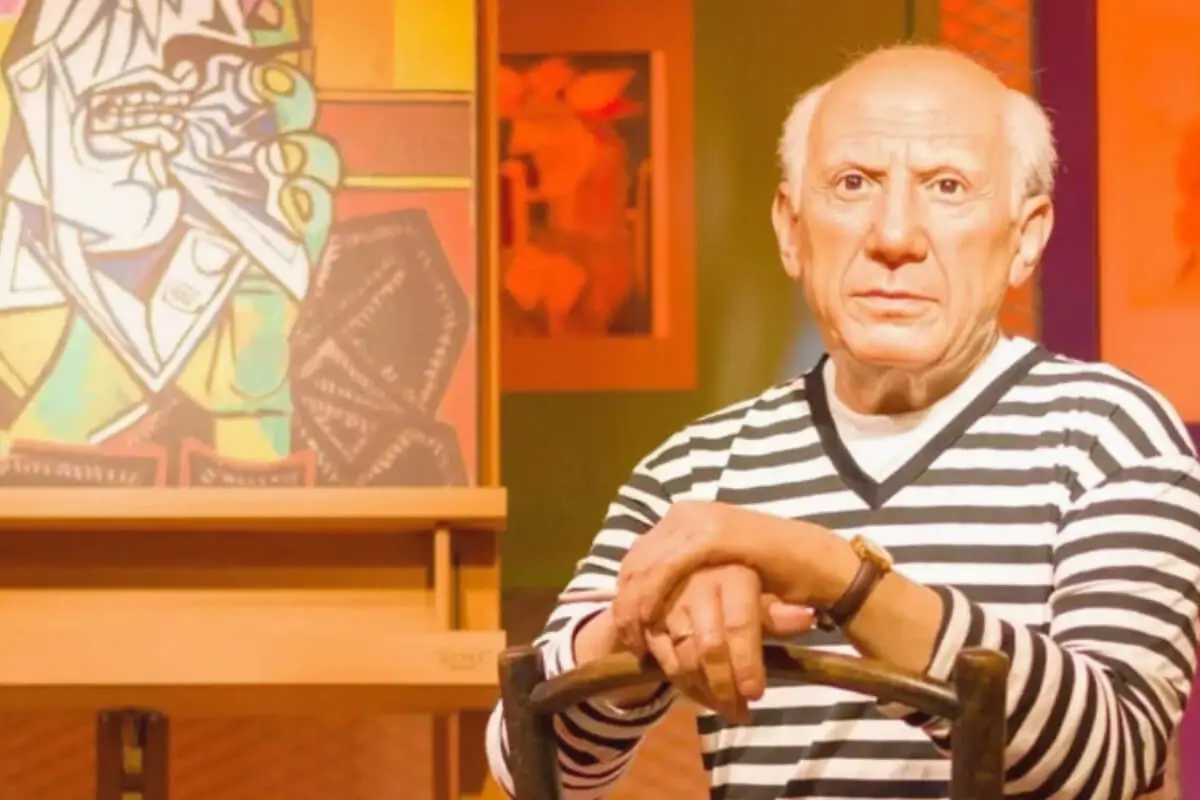Among the myriad of artists who have left an indelible mark on art history, Pablo Picasso is unquestionably pivotal. The Spanish painter pioneered the 20th-century art scene, redefining artistic norms and profoundly impacting the contemporary art world.
This exploration delves into Picasso’s artistic journey, offers a deeper look at his most celebrated works, examines his groundbreaking contributions to Cubism, and dissects his enduring influence on modern art. Bound by no conventional limits, Picasso’s artistic career exemplified a remarkable evolution. It employed innovative techniques that would forever change the artistic landscape and continue to inspire present and future generations.
Table of Contents
- Picasso’s Artistic Evolution
- Famous Works of Picasso
- Picasso and Cubism
- Picasso’s Impact on Contemporary Art
- Related Questions
Picasso’s Artistic Evolution
The Evolution of Picasso’s Unique Style and Techniques
Pablo Picasso, one of the world’s transformative artists, had a long and prolific career that spanned over seven decades. His iconic work has left a significant mark on the art world.
Picasso showcased a distinctive approach and rare prowess that revolutionized the nature of visual art. This article unmasks the layered progression of Picasso’s style and techniques over his lifetime, unquestionably setting him apart as an extraordinary artist.
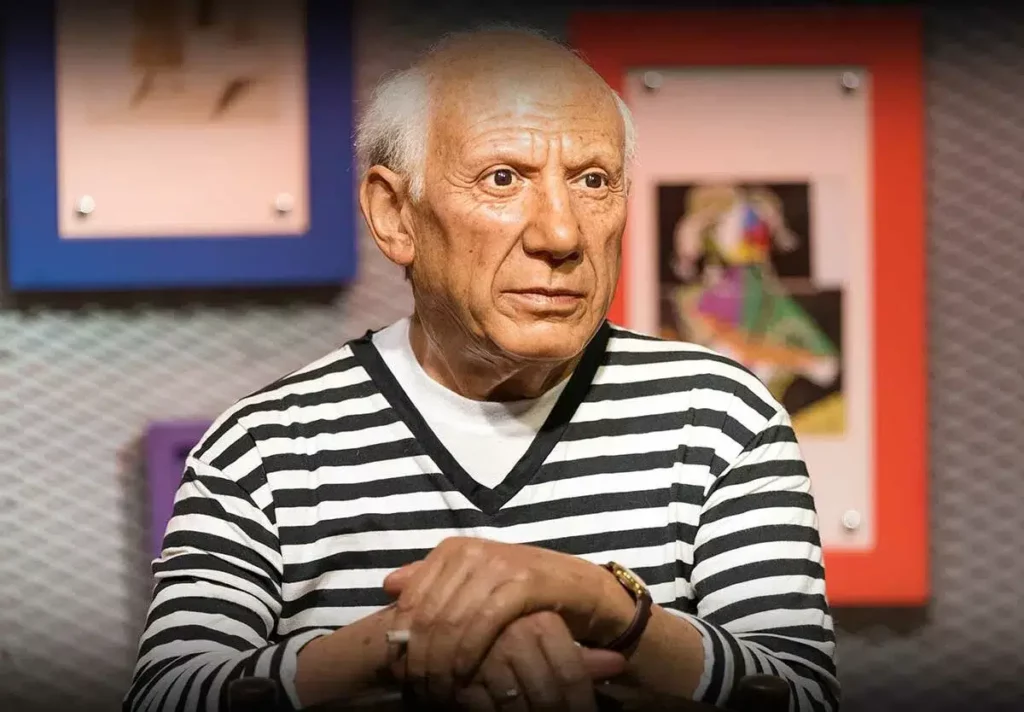
Born into a family of artists in 1881, Picasso displayed his skills from a tender age. The first phase of his artistic journey, generally called the ‘Blue Period,’ was characterized by human struggles’ depictions. It extended from 1901 to around 1904.
The subjects of his compositions during this phase were usually the destitute, beggars, and sick. Picasso’s technique was deeply expressive, using visceral images and a subdued color palette dominated by blue to evoke emotions such as despair and solitude. It was an intriguing demonstration of the artistic reflection of somber life realities.
Around 1905, Picasso’s style transformed, marking a shift in his themes and color tones. This phase introduced warmer colors into his work. The subjects embraced circus performers, acrobats, and clowns.
They were portrayed with greater optimism and tranquility, showing the artist’s shift to more light-hearted themes and marking the development of a more optimistic outlook.
As the artist delved into the early 20th century, he introduced an unorthodox concept called ‘Cubism.’ This revolutionary movement, co-founded with Georges Braque, saw Picasso challenging traditional forms and perspectives.
He deconstructed objects and figures into geometric shapes, simultaneously presenting them from multiple angles. It was a radical departure from his earlier work and typified by a neutral color palette.
Subsequently, from the early 1930s to 1940s, Picasso shifted into the ‘Classical Period.’ This transition saw a return to traditional techniques, with detailed and realistic renderings inspired by Greek and Roman art. The period was characterized by a noticeable emphasis on the human figure, marking a distinct stylistic change.
In his later years, Picasso’s work displayed what is termed as ‘neo-expressionism.’ Simultaneous elements of Cubism, Realism, and Symbolism merged in his pieces. Subjects were surreal, often with exaggerated and distorted features.
It was a mix of his previous periods, making it a unique blend that echoed his artistic journey and showcased the ceaseless exploration of his artistic style and technique.
Throughout his myriad shifts in style and technique, Picasso infused his art with an ardent vitality that remained until his final works. His innovative ideas, inventive techniques, and uncompromising dedication to his craft resulted in an extensive collection of timeless masterpieces that continue to enthrall the world.
Through this exploration of Picasso’s evolving artistic journey, what becomes abundantly clear is the remarkable dynamism and seminal innovation that characterized his oeuvre. It paints an image of a man who was forever in search, relentlessly reinventing his art and himself, providing infinite inspiration to fans and art practitioners.
And therein lies the key to understanding the enduring influence and timeless resonance of Picasso’s art – the resilience and evolution of his unique techniques and style.
Famous Works of Picasso
In the grand tapestry of art, few threads shine as brightly or persistently as those woven by Pablo Picasso. The prodigious prodigy’s works continue to exert a massive influence upon the realm of the visual language and left imprints across different art movements, contributing to the definition of twentieth-century art.
Delving beyond Picasso’s life and periods, this exploration ventures into Picasso’s most renowned works and the significance each holds in the art world.
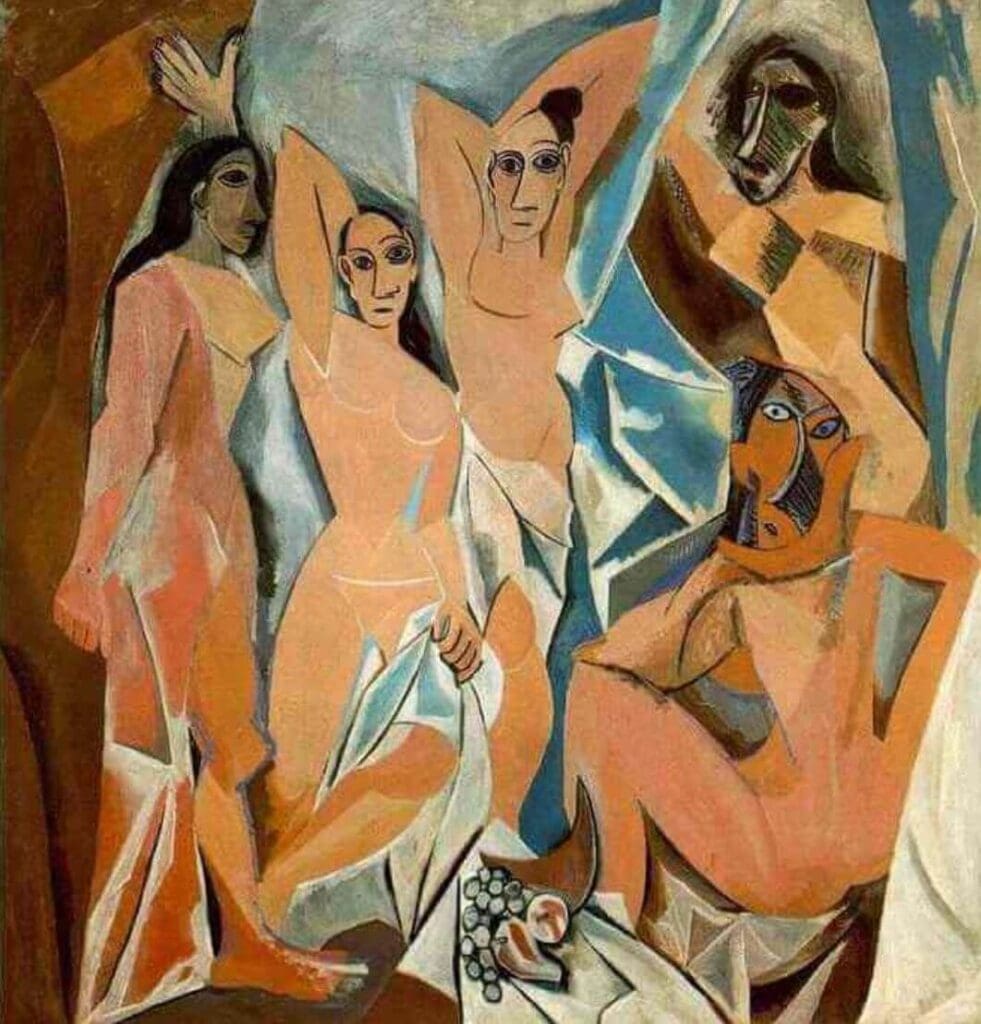
Picasso’s undeniable influence on the world begins with ‘The Young Ladies of Avignon or Les Demoiselles d’Avignon.’ Completed in 1907, this groundbreaking composition disrupted conventional norms, heralding the advent of Cubism.
This painting splintered the female form into geometric, abstract shapes, thus rendering the perceivable world fragmented. Replete with African Art inspiration, the painting’s audaciousness translates into a significant shift from the perspective of traditional Western Art.
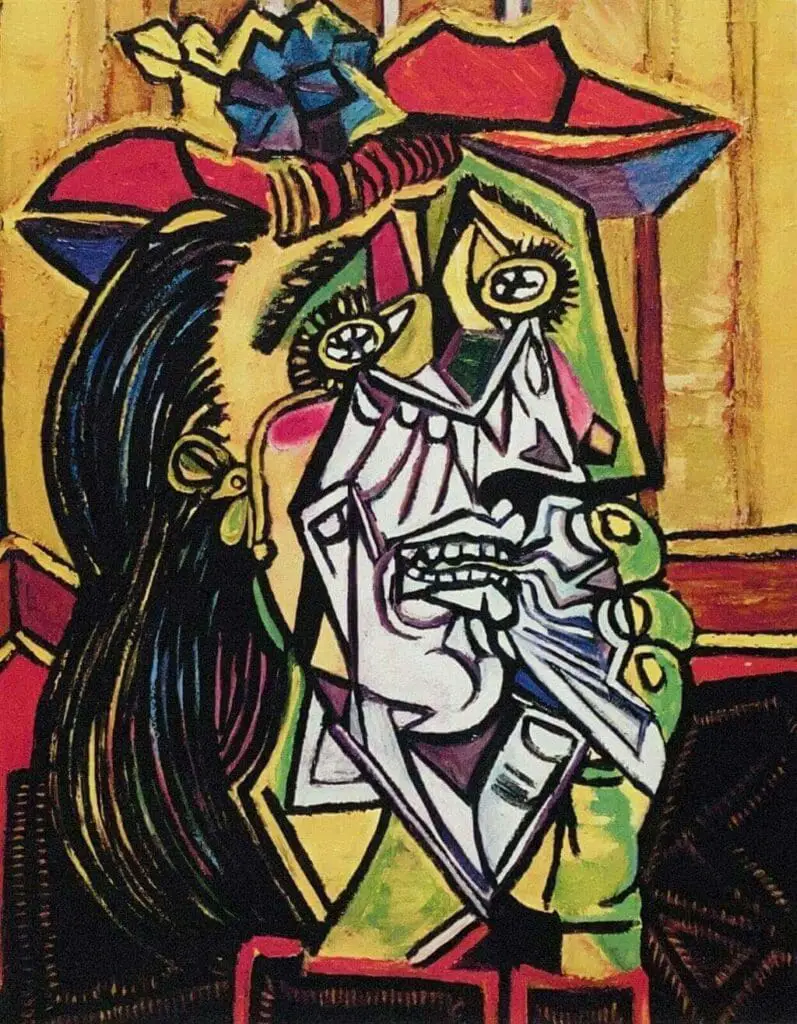
Yet, Picasso’s artistic mastery did not lie solely in his revolutionary approach. An example of sublime simplicity is ‘The Weeping Woman’. Picasso’s depiction of a sobbing female, shattering the norms of portraiture, is one of his most potent testimonies to human agony.
This artwork’s merging styles of symbolism and surrealism echo pain and anguish, reflecting the tumultuous atmosphere of the world during his time.
‘Rape of the Sabine Women’ is another seminal piece that affirms Picasso’s politics. Rendered in his characteristic distorted style, the work represents a heinous episode from Roman mythology and an encouragement towards peace.
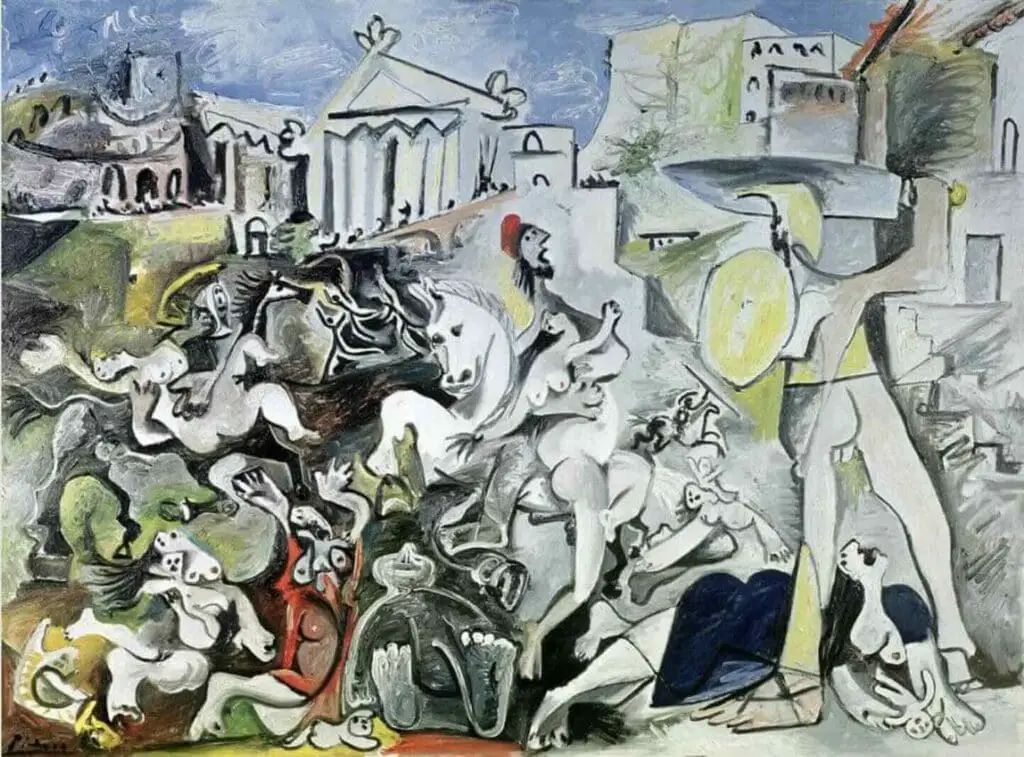
Drawn during the height of the Cold War, ‘Rape of the Sabine Women’ is a vivid protest against violence and war, substantiating Picasso’s role as an artist-activist.

Lastly, Picasso’s most renowned work, ‘Guernica,’ remains one of his most influential paintings. The mural-sized canvas, charged with political symbolism and intense emotion, narrates Picasso’s response to the aerial bombing of Guernica during the Spanish Civil War.
The depiction of suffering and war horrors – fractured, distorted figures crowded on a canvas – pushed the boundaries of traditional painting fare. Today, ‘Guernica’ is a universal and potent symbol of the devastation of war.
Each of these significant works reveals Picasso as an extraordinary artist and a figure deeply entwined with his era’s historical and philosophical progressions. Picasso’s breadth of influence inspires countless artists, scholars, and admirers, resonating deeply in the rhythm of art history.
The evolution in each stroke, the transformation in each canvas, the growth in each period, and the revolution in each approach – every aspect of Picasso’s vast legacy pulses with an invigorating life force, making him an enduringly vibrant figure in art.
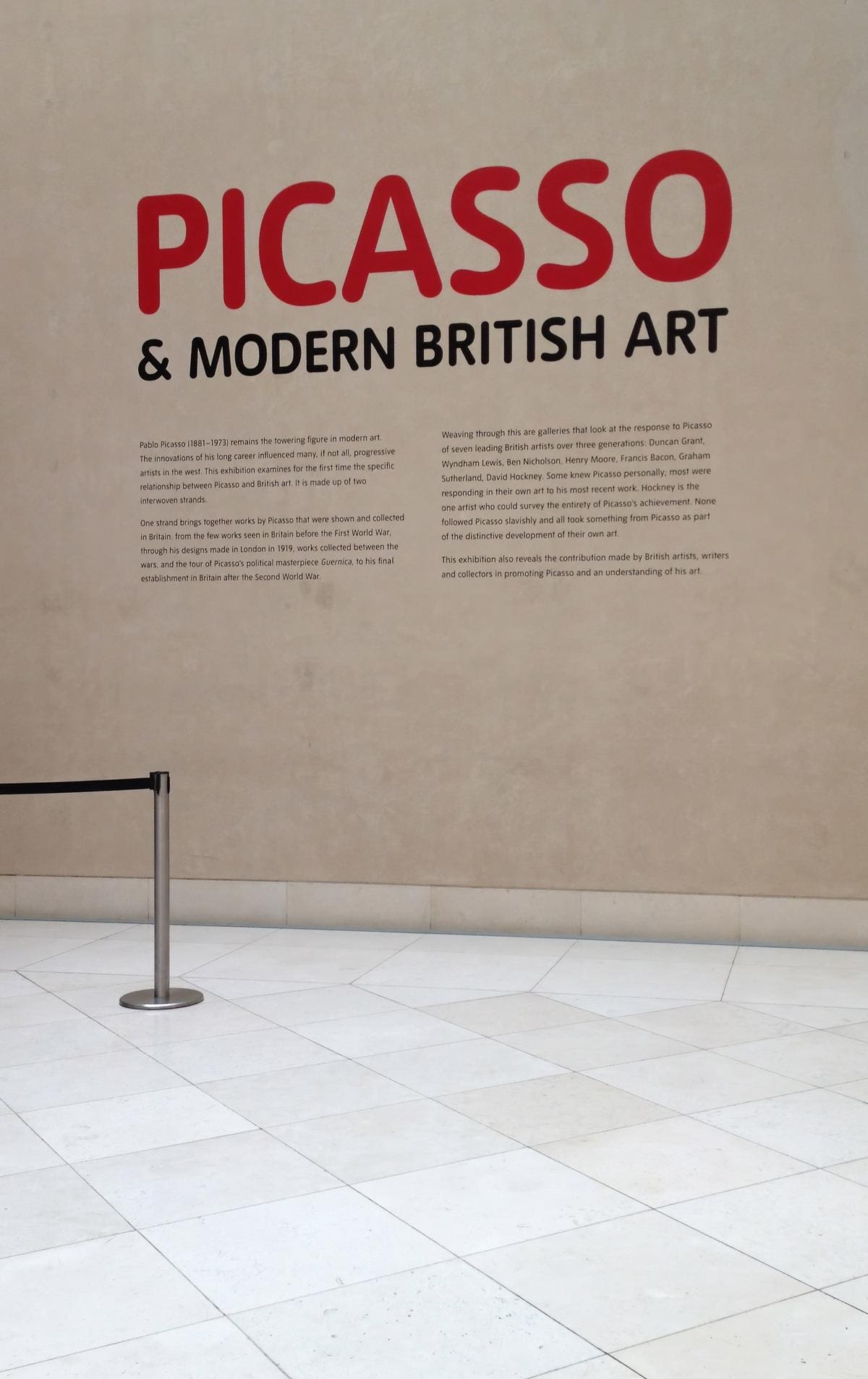
Picasso and Cubism
Shaping Cubism: Picasso’s Pioneering Transformation
Pablo Picasso, an artistic prodigy, played an indispensable role in forming and propelling the Cubist movement into the modernist era.
His forward-thinking vision and ceaseless creativity allowed him to disassemble objects and figures, rearranging them into abstract, fragmented forms that were radical for the era, signifying a seismic shift in the landscape of visual art.

The crystalizing moment in the birth of Cubism was arguably encapsulated in Picasso’s Les Demoiselles d’Avignon (1907), a painting that shattered traditional representations of reality. It disrupted the norms of perspective, reconceptualized form, and exploited abstraction, forming a profound departure from artistic conventions.
The distorted features, geometric facets, and ‘primitive’ art influences in this painting laid the groundwork for Cubism and set the stage for Picasso’s further explorations.
Picasso’s interest in African Art is duly noted, evident in the masks depicted in Les Demoiselles d’Avignon. This aesthetically rich integration of non-Western art fused cultures and styles, revealing new dimensions in visual language.
This audacious incorporation imbued Picasso’s work with novel structural dynamism and complexity, enriching the normative perspective of Western art and shaking its foundation.

In the tapestry of Picasso’s work, The Weeping Woman (1937) is a masterpiece of emotional potency. The subject’s distorted proportions and fractured features exemplify Cubist aesthetics while leveraging Pablo’s strain of symbolism and surrealism.
This synthesis results in an influential fusion of styles, conveying a depth of human agony that only a master of Picasso’s caliber could weave.
With Guernica (1937), Picasso plumbed new depths of political symbolism within the Cubist style. He employed Cubism’s multidimensional, fractured aspects to depict the brutality of war, the anguish of victims, and the chaotic aftermath. The painting is an aesthetic endeavor and a visual treatise on the horrors of the Spanish Civil War.
Pablo Picasso’s portrayal of the human experience through his Cubist masterpieces demonstrated an unprecedented depth and breadth of artistic expression. He fearlessly deconstructed the norms and rebuilt them into an avant-garde style that continues to excite the art world.
Far from merely being Cubism’s co-founder, Picasso is its most articulate exponent, creating an enduring legacy that redefines the landscape of art history. Picasso’s revolutionary vision not only shaped the course of Cubism but continues to mirror and magnify the capacity of art to evolve and challenge its boundaries continuously.

Picasso’s Impact on Contemporary Art
Diving into Picasso’s Influence: Paradigm Shifts and Untamed Creativity
One of the most tangible ways that Picasso’s defiant artistry has shaped contemporary art is through his daring liberation of form, which has endowed artists with new, practiced, and expressed freedom to explore beyond traditional artistic constraints.
Picasso’s blazing journey of artistic experimentation and passionate expression continues to empower artists, echoing the call to challenge the boundaries of perception and expectation.
The groundbreaking birth of Cubism, primarily ushered in by Picasso’s artistry, upended traditional principles of perspective and spatial representation.
This artistic revolution’s seismic ripples continue reverberating through the art world, empowering contemporary artists to fracture and reconfigure form and subject in untamed explorations of perception and narrative.
Cubism ultimately expanded the artistic possibilities, birthing divergences far beyond Cubism into other modernist and post-modernist movements such as Dadaism, Surrealism, and Abstract Expressionism.
Picasso’s audacious approach to subject and form was beautifully evident in his renowned masterpiece, “Les Demoiselles d’Avignon.” This bold departure from artistic convention saw Picasso shatter traditional beauty, grace, and modesty norms, revealing raw and jarring representations of the female form.
This untamed exploration of raw emotion, undefined by classic proportions or familiar silhouettes, has left a lasting legacy on contemporary portraiture, offering artists a pathway to re-envision how the human form can be distorted to convey emotional depth and narrative charge.
A pronounced fascination with African Art birthed a tidal wave of influence in Picasso’s oeuvre, imbuing many of his works with an exotic aura of otherness, a captivating blend of the familiar and the profound mystery.
This unique explorative dialogue between the distinctive traditions of African Art and European classicist conventions has profoundly impacted the world of contemporary art, inspiring artists to valorize the other in a fusion of perspectives, aesthetics, and narratives.
No examination of Picasso’s indelible impact on art would be complete without a testament to the emotional potency of his work. The iconic “Weeping Woman” lent human agony a tangible form through raw, expressive distortions, brilliantly illuminating the depth of human suffering.
This expressive authenticity has since infiltrated contemporary art, with artists boldly grasping Picasso’s mantle of portraying emotional and psychological states through art.
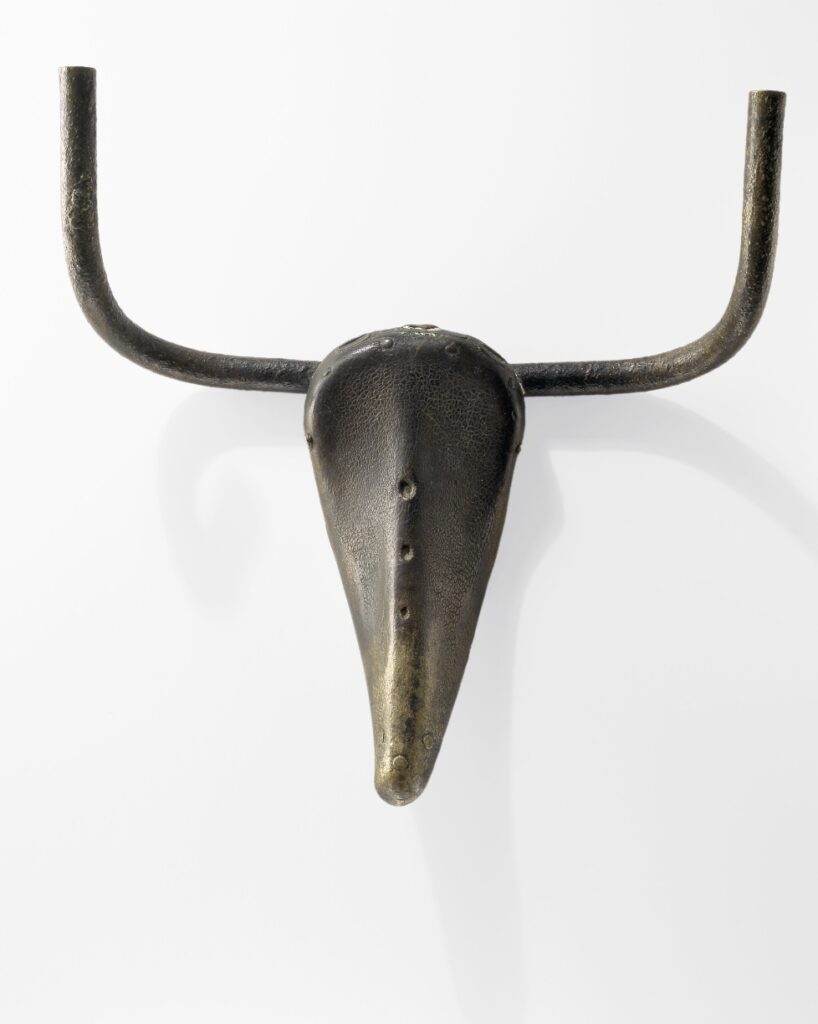
Beyond his prowess in painting, Picasso’s influence blossomed in sculpture through his artistic appropriation of “found objects.” His work “Bull’s Head,” sculpted from a bicycle seat and handlebars, underscores that any object, regardless of its prosaic origins, can be reborn in art.
This understanding informs a great deal of contemporary art, from installations to assemblage, fostering a collective shift in perception regarding what objects can be artistically validated.
In conclusion, the galvanizing astuteness of Picasso’s crafted masterpieces has catalyzed an evolution in art history, his indelible fingerprints trailing through numerous artistic expressions transcending time and space.
From the unique insights that evolved from dissecting form through the prism of Cubism to the emotional gravity of his shaken and distorted subjects to the innovative breath of life instilled within everyday objects, Picasso has forever shaped how artists perceive and engage with the world.
His enduring legacy remains an influential touchstone for contemporary artists, providing powerful tools and perspectives to challenge and redefine art.
Anita Louise Art is dedicated to art education, great artists, and inspiring others to find and create their art. We love art that uplifts and inspires. #ArtToMakeYouSmile! #ArtToMakeYouHappy!
If you want to see any of my art, you can find out more by clicking here. If you are interested in what inspires me and my paintings, you can discover more by clicking here.
We have a free newsletter and would love you to be part of our community; you can subscribe to the newsletter by clicking here. If you have any questions, I would be happy to talk to you. You can reach me, Anita, by clicking here.
Subscribe to our Anita Louise Art YouTube Channel filled with great videos and information by clicking here.
Join us for our podcast “5 Minutes With Art.” Spend 5 minutes a week with us to discover and learn about great art and artists. You can find out more about our podcast by clicking here.
Related Questions
Salvador Dalí And Pablo Picasso, Similarities And Differences
Salvador Dalí and Pablo Picasso are two of the most iconic and influential artists of the 20th century. These Spanish painters revolutionized the art world with their unique styles and groundbreaking approaches to art. Although they were contemporaries and shared a common heritage, their styles differed vastly, and their artistic visions diverged significantly.
By clicking here, you can learn more by reading Salvador Dalí And Pablo Picasso, Similarities And Differences.
Differences Between Leonardo da Vinci And Pablo Picasso
Leonardo da Vinci and Pablo Picasso lived in entirely different times; their artwork is also very different. Both are considered artistic geniuses who influenced art movements and were essential artists during the time and place they lived. Leonardo only painted a few paintings, whereas Picasso was a prolific artist.
By clicking here, you can learn more by reading Differences Between Leonardo da Vinci And Pablo Picasso.
40 Inspiring Quotes From The Artist Pablo Picasso
The Spanish artist Pablo Picasso lived a very long life. During his lifetime he gave us many inspiring quotes about art, love, and living life. These are some of our favorite quotes by Pablo Picasso.
By clicking here, you can learn more by reading 40 Inspiring Quotes From The Artist Pablo Picasso.

